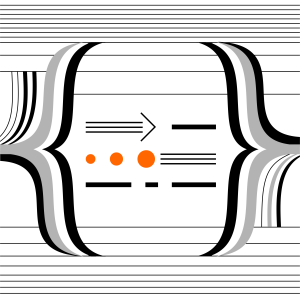The Skin of the Game: A Deep Dive into the Materials That Tame the Sea
We tend to think of ships as simple, brute-force objects: giant iron tubs that float. This is profoundly wrong. A modern vessel is a materials science masterpiece, a meticulously engineered compromise between strength, weight, cost, and a 25-year battle against the most corrosive environment on Earth. This isn't just about avoiding rust; it's a high-stakes game of metallurgy and polymer chemistry that dictates a ship's speed, efficiency, and safety. In this deep dive, we’ll break down the materials that form the skin of global trade. We’ll explore why steel is still king but has many different grades, why aluminum is the choice for speed, and how "plastic" boats took over the world. We’ll look at the unsung heroes like insulation and coatings, and then peek into the wild future of self-healing, intelligent materials.
Introduction: The Floating Compromise
A ship is, fundamentally, an economic argument wrapped in a scientific problem. The argument is: can I move X amount of stuff from point A to point B for a price Y and make a profit? The problem is: can I build a container for X that won't dissolve, snap in half, or get eaten by the ocean before I can pay off the loan?
Everything about a ship is a compromise. You want it to be strong, but strength means thick steel, which is heavy. Heavy means you need a bigger engine, which burns more fuel, which eviscerates your profits. You want it to be fast, which means it needs to be lightweight. But lightweight materials are often expensive or less durable. You want it to last 30 years, but the ocean wants to turn it into a reddish-brown powder in 30 months.
For centuries, the answer to this problem was wood. Then, for about 150 years, the answer has been, simply, "iron" and then "steel." But that simple answer hides a world of complexity. The choice of material is the single most important decision in a ship's life. It dictates its purpose, its performance, and its ultimate fate. This is the story of those materials—from the humble steel plate to the exotic carbon fiber, all locked in a constant, brutal war with the sea.
Chapter 1: The King is Not Dead: The Reign of Steel
Let’s get this out of the way: steel is still the king. More than 90% of all commercial ships by tonnage are made of steel. It’s relatively cheap, it’s incredibly strong, it’s easy to cut, weld, and repair anywhere in the world, and we, as a species, have gotten ridiculously good at making it.
But saying a ship is made of "steel" is like saying a Michelin-star meal is made of "food." The reality is a carefully specified cocktail of different grades of mild carbon steel, chosen by a naval architect with the precision of a surgeon. The ship’s hull is a patchwork quilt of these different grades.
The Alphabet Soup of Marine Steel
Marine steel is graded by classification societies (like Lloyd's Register or the American Bureau of Shipping) based on its tensile strength and, crucially, its toughness at low temperatures. A ship crossing the North Atlantic in winter might see air temperatures of -20°C or lower. At these temperatures, normal steel can become brittle and fracture like glass. This is not a desirable feature in a 200,000-ton oil tanker.
The grades are a cascade of increasing toughness:
-
Grade A/B: Your standard, run-of-the-mill ship steel. Used for the main structure in less critical areas of the ship.
-
Grade D/E: Higher-toughness steels that have been specially treated to resist brittle fracture at lower temperatures (-20°C for D, -40°C for E). You’ll find these in key structural components and on ships destined for cold-weather routes.
-
High-Strength Steels (e.g., AH36, DH36, EH36): This is where it gets interesting. These are High-Strength Low-Alloy (HSLA) steels. By adding small amounts of elements like manganese and vanadium, metallurgists create a steel that is significantly stronger than mild steel. The "36" indicates a yield strength of 360 megapascals.
Pros & Cons of Steel
-
Pros:
-
Cost: It’s the cheapest structural material by a wide margin.
-
Strength & Durability: Its ability to handle immense loads and impacts is unparalleled. It can deform and bend without breaking, which is a very good thing in a violent sea.
-
Ease of Fabrication: You can find someone who knows how to weld steel in literally any port on Earth. This makes construction and repair straightforward.
-
Fire Resistance: It has a very high melting point, which is critical for safety.
-
-
Cons:
-
Weight: Steel is dense. The sheer weight of a steel hull is a permanent, fuel-sucking penalty for the life of the ship.
-
Corrosion (aka Rust): This is the great and eternal enemy. Steel is mostly iron, and iron in the presence of oxygen and saltwater has a passionate desire to revert to its natural state: iron oxide. A ship is, in essence, an object that is actively trying to dissolve. The entire science of marine coatings is dedicated to preventing this.
-
The battle against rust is fought with a multi-layered defense system: sacrificial anodes (blocks of zinc that corrode instead of the hull), impressed current cathodic protection, and, most importantly, high-performance marine coatings. A modern ship has a coating system that might be five or six layers thick, from anti-corrosive primers to slick, anti-fouling topcoats that prevent barnacles and algae from turning the hull into a shaggy, high-drag mess.
Chapter 2: The Lightweight Challenger: Aluminum
If steel is the reliable, heavy-duty pickup truck, aluminum is the sleek, lightweight sports car. When your business model depends on speed—fast ferries, patrol boats, high-performance yachts—the weight penalty of steel is unacceptable. This is where marine-grade aluminum shines.
Aluminum is roughly one-third the density of steel. Building a hull out of aluminum results in a vessel that is significantly lighter, requiring smaller engines to achieve the same speed, or achieving much higher speeds with the same engines. This is the simple, beautiful math that created the entire fast ferry industry.
But, of course, there are compromises.
The 5xxx and 6xxx Series
You can’t just build a boat out of any aluminum. Pure aluminum is soft and weak. For marine use, specific alloys are required.
-
5xxx Series (e.g., 5083, 5086): This is the workhorse of marine aluminum. It’s an alloy of aluminum and magnesium. The magnesium gives it excellent strength and, critically, fantastic corrosion resistance in saltwater. It’s strain-hardenable, meaning it gets stronger as it's worked. This is the stuff that high-speed catamarans and rugged Coast Guard cutters are made of.
-
6xxx Series (e.g., 6061): This is an aluminum-magnesium-silicon alloy. It’s not as corrosion-resistant as the 5xxx series, but it’s very easy to extrude into complex shapes, making it perfect for things like masts, window frames, and other topside structures.
Pros & Cons of Aluminum
-
Pros:
-
Weight: The killer app. Its high strength-to-weight ratio is its entire reason for being.
-
Corrosion Resistance: Marine-grade aluminum forms a passive layer of aluminum oxide on its surface, which naturally protects it from further corrosion. It doesn't "rust" in the same way as steel.
-
-
Cons:
-
Cost: Aluminum plate is significantly more expensive than steel plate, both to buy and to fabricate.
-
Fabrication: Welding aluminum is a specialized skill requiring different equipment and techniques (TIG/MIG welding) than steel. It’s a more delicate, less forgiving process.
-
Fatigue: Aluminum is more susceptible to metal fatigue than steel. A hull that is constantly flexing and vibrating in the waves has a finite lifespan, which must be carefully engineered and inspected.
-
Galvanic Corrosion: This is aluminum’s Achilles' heel. If you put aluminum in contact with a more "noble" metal (like stainless steel or bronze) in the presence of an electrolyte (saltwater), you create a battery. The aluminum becomes the anode and will rapidly corrode and sacrifice itself. This requires careful design and insulation between different metals.
-
Fire Resistance: Aluminum has a much lower melting point than steel (around 660°C). In a serious fire, an aluminum superstructure can lose its structural integrity and collapse, a major concern for safety regulators.
-
Chapter 3: The Plastic Fantastic: Composites & Polymers
For a huge portion of the marine world—basically any boat under 50 meters—steel and aluminum are irrelevant. This world belongs to composites, which is a polite engineering term for "plastic reinforced with some kind of fiber."
The most common composite is Glass-Reinforced Plastic (GRP), often called Fibreglass (FRP). The concept is brilliant. You take a mold (the shape of your hull), spray it with a gelcoat (the smooth, shiny outer layer), and then lay in mats of glass fibers, impregnating them with a liquid polyester or epoxy resin. When the resin cures, you have a strong, lightweight, seamless hull.
This process revolutionized the boating industry in the mid-20th century. It made boats affordable for the masses and allowed for complex, hydrodynamic hull shapes that were impossible to create with wood or metal.
For the high-performance racing world, GRP is replaced with even more exotic materials like Carbon-Fiber-Reinforced Plastic (CFRP) and Aramid (Kevlar) fibers. These materials offer an astronomical stiffness-to-weight ratio, but at an equally astronomical cost.
Pros & Cons of Composites
-
Pros:
-
Design Freedom: You can mold a composite hull into virtually any shape you can imagine.
-
Weight: Composites offer a strength-to-weight ratio that can be superior to aluminum.
-
Corrosion Resistance: They are immune to corrosion. They simply don't rust or degrade in saltwater.
-
Low Maintenance: A smooth gelcoat finish is easy to clean and doesn't require the constant painting of a steel or aluminum hull.
-
-
Cons:
-
Osmosis: The boogeyman of fiberglass boats. Over time, water can sometimes permeate the gelcoat and get trapped in the laminate, creating acidic blisters that can weaken the hull. Modern resins have largely solved this, but it’s a known issue in older boats.
-
Fire Safety: Standard polyester resins are flammable and can release toxic smoke. Meeting strict fire codes for commercial vessels often requires using more expensive, fire-retardant resins.
-
Repair: Repairing a serious structural crack in a composite hull is more of an art than a science, requiring specialized knowledge of laminates. It's not as straightforward as welding a steel plate.
-
Environmental Concerns: A fiberglass boat has a very long life, but at the end of it, what do you do with it? The composite material is difficult to recycle, and many old boats end up in landfills.
-
Chapter 4: The Unsung Heroes: Insulation, Glass, and More
A ship is more than just its hull. The materials used inside are just as critical, especially when it comes to safety.
-
Insulation: The inside of a ship is a maze of fire-rated bulkheads designed to contain a fire in one compartment. The safety of everyone on board depends on these barriers holding up. This is governed by the international SOLAS (Safety of Life at Sea) convention. Materials like mineral wool (Rockwool) and fiberglass are used to create A-60 rated bulkheads, meaning they can prevent the passage of flame and smoke for at least 60 minutes. In areas like engine rooms and galleys, this is not optional; it's a matter of life and death.
-
Marine Glass: The windows on a ship's bridge are not your household windows. They are massively thick, thermally toughened panes of glass, often laminated, designed to withstand the impact of a solid green wave breaking over the bow. They are also often heated with an invisible conductive film to prevent icing and fogging in cold climates.
-
Wood (Yes, Still!): While no longer a structural material, teak is still the undisputed king of decking on yachts and cruise ships. Its natural oils make it incredibly resistant to rot and weathering, and it provides a non-slip surface that is both beautiful and functional.
Chapter 5: The Material World of Tomorrow
The arms race of materials is far from over. The pressures for greater efficiency and sustainability are driving incredible innovation.
-
Graphene: The ultimate buzzword material. An atom-thick sheet of carbon that is 200 times stronger than steel. The potential is mind-boggling. Adding a tiny amount of graphene to marine coatings can dramatically improve their anti-corrosive and anti-fouling properties. A graphene-infused composite hull could be unimaginably light and strong. It's still wildly expensive, but the price is falling.
-
Self-Healing Materials: Imagine a hull coating that, when scratched, automatically repairs itself. Researchers are developing polymer coatings with microcapsules of resin that rupture upon impact, releasing a healing agent that fills the scratch and hardens. This could dramatically reduce maintenance costs and prevent corrosion from ever starting.
-
Smart Materials & Embedded Sensors: Why wait for a crack to appear? The ship of the future will have a network of fiber-optic sensors embedded directly into its composite or steel structure. These sensors will monitor stress, strain, and fatigue in real-time, giving the captain and shore-side engineers a live health report of the hull. The ship will tell you it's getting tired before a problem occurs.
-
Sustainable & Recyclable Composites: The industry is tackling the end-of-life problem for fiberglass. New bio-resins and thermoplastic composites are being developed that can be melted down and reformed, turning a boat from a piece of permanent waste into a recyclable asset.
Conclusion: The Hybrid Future
The simple truth is that there is no single "best" material for a ship. The era of monolithic design is ending. The vessel of the near future will be a hybrid, a chimera of advanced materials.
It might have a high-strength steel hull for durability and cost-effectiveness. The superstructure, to save weight and improve stability, might be made of aluminum. The mast and deck hatches could be lightweight carbon fiber. The decking will be a sustainable, synthetic teak. And the entire structure will be wrapped in a smart, self-healing coating that reports its status to the cloud.
The ship will cease to be a passive object and will become an active, integrated system. The choice will no longer be "steel or aluminum?" but "which of these fifty advanced materials is the perfect, economically viable choice for this specific square meter of the vessel?" It’s a complex, fascinating, and high-stakes puzzle that will define the next generation of global trade.





